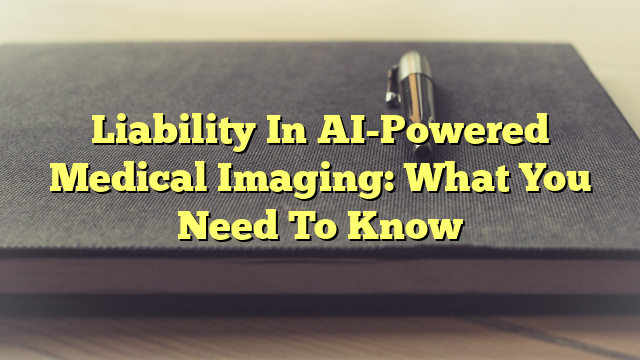Liability in AI-Powered Medical Imaging: What You Need to Know
Table of Contents
Liabilities of AI in Healthcare
AI technology has made significant advancements in the field of healthcare, particularly in medical imaging. However, with these advancements come potential liabilities that need to be considered. One major liability is the possibility of misdiagnosis or false positives/negatives due to errors in the AI algorithms. If a patient’s condition is misdiagnosed or not detected accurately, it can lead to delayed or incorrect treatment, which can have serious consequences.
Another liability is the potential for data breaches or privacy concerns. AI-powered medical imaging systems rely on vast amounts of patient data, including personal and sensitive information. If this data is not properly protected or if there are vulnerabilities in the AI system, it can lead to unauthorized access or misuse of patient data.
Additionally, there is the risk of bias in AI algorithms. If the training data used to develop the AI algorithms is biased or incomplete, it can lead to biased results and unequal treatment of patients. This can have ethical and legal implications, particularly in cases where AI is used to make decisions about patient care or treatment plans.
Risks of AI in Medical Imaging
AI-powered medical imaging brings several risks that need to be addressed. One risk is the potential for errors or inaccuracies in the AI algorithms. While AI systems can analyze medical images with great speed and efficiency, there is still the possibility of false positives or false negatives. This can lead to misdiagnosis or missed diagnoses, which can have serious consequences for patients.
Another risk is the overreliance on AI technology. Healthcare professionals may become overly dependent on AI systems and may overlook or dismiss their own clinical judgment. This can lead to a lack of critical thinking and potentially harmful decisions based solely on the output of the AI algorithms.
There is also the risk of regulatory and legal challenges. As AI technology continues to advance, regulations and legal frameworks may struggle to keep up. This can create uncertainty and potential liability issues for healthcare providers and developers of AI-powered medical imaging systems.
AI Liability Risk
The liability risk associated with AI technology in medical imaging is complex and multifaceted. In cases where a patient’s condition is misdiagnosed or not detected accurately by an AI system, determining liability can be challenging. It may involve multiple parties, including the healthcare provider, the developer of the AI system, and potentially even the data used to train the AI algorithms.
Liability may also depend on the level of human involvement in the decision-making process. If the AI system is used as a tool to assist healthcare professionals in making diagnoses or treatment decisions, the ultimate liability may still rest with the healthcare provider. However, if the AI system is fully autonomous and makes decisions without human intervention, the liability may shift more towards the developer of the AI system.
Who is Liable for AI Content?
The question of who is liable for AI content in medical imaging is a complex issue that is still being debated and determined by legal and regulatory frameworks. In general, liability may be shared between the healthcare provider and the developer of the AI system.
Healthcare providers have a duty to ensure the safety and accuracy of the medical imaging systems they use, including AI-powered systems. They may be held liable if they fail to properly implement or supervise the use of these systems, leading to patient harm.
Developers of AI-powered medical imaging systems may also be held liable if their systems have design flaws, programming errors, or if they fail to provide adequate instructions or warnings to healthcare providers. They have a responsibility to develop and maintain safe and effective AI systems and to address any known risks or limitations.

